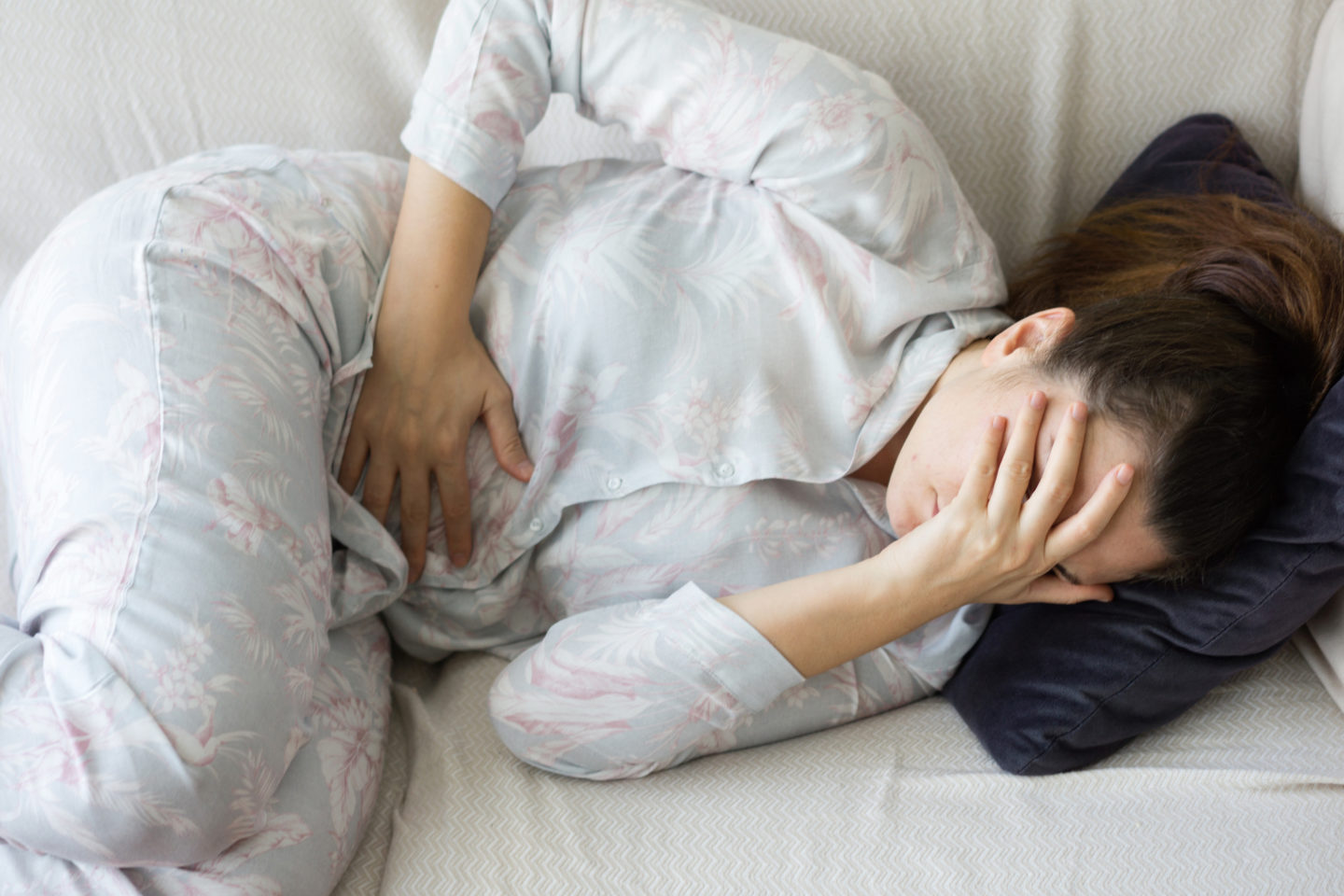Good news: adenomyosis isn’t life threatening. Bad news: it causes heavy bleeding, bloating, and cramps.
The good news about adenomyosis is that it isn’t life threatening. The bad news is that it’s a condition that can cause heavy and lasting menstrual bleeding, intense bloating and abdominal pain, and severe cramps. It sounds awful because it is. So what is adenomyosis?
According to Robert B. Albee, Jr. MD, adenomyosis was once referred to as endometriosis interna, or, in layman’s terms, inside-out endometriosis. Similar enough to endometriosis that is is called a “sister disease,” adenomyosis is a condition that, “causes the endometrial tissue of the uterus cavity to grow into the uterus muscle.” This damages the uterine wall. What makes endometriosis different from adenomyosis is that the endometrial tissue grows outside the uterus, while it grows inside it with adenomyosis.
The Seckin Endometriosis Center cites between 40 and 50 percent having both adenomyosis and endometriosis, and 50 percent of people with adenomyosis also having fibroids at some point.
There are three different classifications of adenomyosis – focal, adenomyoma, and diffuse. Focal adenomyosis is adenomyosis focused in only one area of the uterus. Adenomyoma is similar to focal in that it is focused, but has grown to the point of being a mass or benign tumor. Adenomyosis spread throughout the uterus is what diffuse adenomyosis is.
Adenomyosis isn’t yet a fully understood condition and, at present, doctors and researchers aren’t sure what even causes it, though the Mayo Clinic discusses a few theories about it. One theory is that it was “deposited there when the uterus first formed in the fetus. Other theories surmise stem cells from bone marrow making their way into the uterus and eventually becoming adenomyosis or uterine inflammation after birth cause the condition. The Seckin Endometriosis Center also cites “tissue trauma or any vaginal injury” as potentially causing the condition as well.
There have been certain factors that seem to increase the risk of getting adenomyosis, like previously giving birth or being middle aged. Having a uterine surgery, like a C-section or getting fibroids removed, are also linked to increasing the likelihood of developing adenomyosis.
Many times, people with adenomyosis don’t have any noticeable symptoms, or believe their symptoms to be normal parts of menstruation. Tamer Seckin, MD, of the Seckin Endometrial Center, confirms this, stating that “many girls are made to believe [from family and friends] that pain during menstruation is normal…we need to do a better job of defining the difference between normal and abnormal…It must be understood that pain is not normal. Chronic pain has a reason, a physical cause, and is valid.”
Symptoms of adenomyosis include:
- Heavy or prolonged bleeding, or both
- Dysmenorrhea, which is severe menstrual cramps
- menstrual cramps every day of your period
- cramps that worsen as you get older
- Having blood clots while on your period
- pain during sex
- spotting between periods
- tenderness in your stomach
- dyschezia, which pain during bowel movements
- uncomfortable or burning urination, or blood in the urine
- anemia
- decreased fertility
- increased miscarriage and pre-term birth
Many symptoms of adenomyosis are very similar to those of other conditions like fibroids, endometriosis, and polyps, so it is very important to get check out by your doctor. If your period is causing heavy bleeding and cramps that interfere with your daily life, seeing your doctor is a necessity because it could cause you to become anemic. Dealing with the pain and other symptoms can also lead to or exacerbate depression.
Typically, adenomyosis is a condition that goes away after menopause, so if nearing that age, a doctor may prescribe anti-inflammatory medicine to help curb pain and the amount of bleeding during your period. Birth control is another option to help decrease symptoms. Birth control pills with estrogen and progestin and the patch often decrease bleeding and pain, while IUDs can cause periods to cease. Results with birth control vary, and sometimes take a bit of trial and error. A hysterectomy is another potential treatment, especially for people with worse cases and those still years away from menopause.




comments